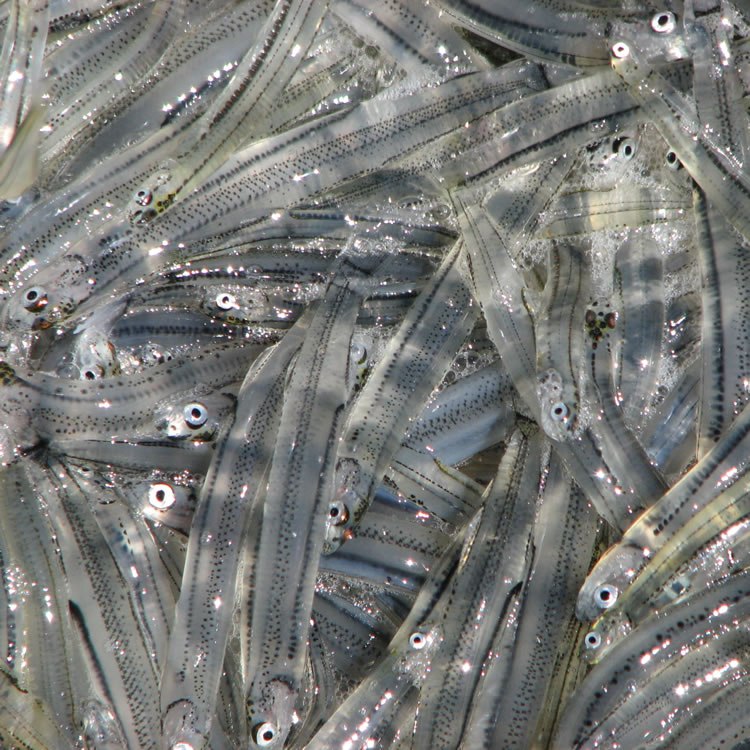Baitfish

Community type
Habitat type
Baitfish is the name given to a range of small marine fish species that commonly occur in schools. A number of species occur in shallow waters of the Derwent estuary including anchovy, redbait, sardines, and juvenile mullet.
These fish are collectively called ‘baitfish’ as they are often caught by fisherman to use as bait for other fish. Whitebait are another group of small fish that frequent estuaries and may venture into shallow waters over tidal flats. In the Derwent estuary there are six different species collectively called ‘whitebait’. These fish all have semi-transparent bodies, and migrate upstream each spring to spawn and take shelter in estuarine wetlands and mudflats. One whitebait species is the endemic Lovettia sealii, which is known to have a life cycle of just one year. The Derwent once supported a important whitebait fishery, but commercial fishing was suspended after fish stocks plummeted in the 1950s, leading to the closure of the fishery in 1974. Numbers have slowly increased to sufficient levels for a limited recreational season. Baitfish and whitebait are an important part of marine and freshwater food webs as they are targeted by a wide range of larger aquatic predators.
